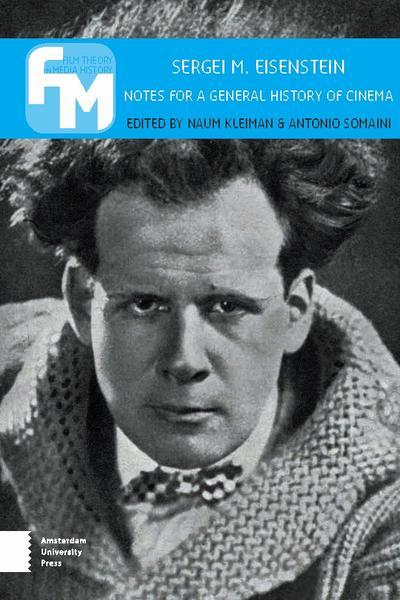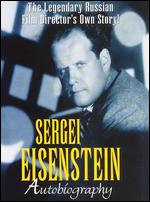Description: Expanding on his editing experiments in Battleship Potemkin (1925), Sergei Eisenstein melded documentary realism with narrative metaphor to depict the pivotal events of the Russian Revolution in October (1927). Commissioned to commemorate the 10th anniversary of the 1917 October Revolution, Eisenstein focused on a few key events from February 1917 to October 1917. Underlining the symbolic importance of those episodes, Eisenstein constructed October as an elaborate “intellectual montage,” deriving meaning from the metaphorical or symbolic relationships between shots. Drawing out narrative time through cutting, Eisenstein turns an opening drawbridge into a sign of the divisive struggle in St. Petersburg. Similarly exaggerating the time that it takes provisional leader Kerensky to climb a palatial staircase, and intercutting shots of Kerensky with a Napoleon statue and a mechanical peacock, Eisenstein satirically reveals Kerensky’s imperial hubris and vanity. Having done extensive research for accuracy, Eisenstein also staged mass battles, particularly the storming of the Winter Palace, with thousands of extras, including the Soviet army. Before October’s release, however, Josef Stalin’s ascent to power required Eisenstein to edit out all references to Stalin rival Trotsky. Neither the Soviet public nor the Soviet leaders cared for the finished film; the government accused Eisenstein of “formalist excess.” An edited version of the film was released in the U.S. using the title of John Reed’s book, Ten Days That Shook the World. While the film’s whole is not as great as its parts, the abstract power and narrative innovation of its greatest sequences still render it a seminal work in the development of film form.
~Lucia Bozzola allmovieRead More »
Sergei M. Eisenstein
-
Grigori Aleksandrov & Sergei M. Eisenstein – Oktyabr AKA October AKA Ten Days That Shook the World (1928)
1921-1930Grigori Aleksandrov and Sergei M. EisensteinPoliticsSergei M. EisensteinSilentUSSR -
Sergei M. Eisenstein – Ivan Groznyy I (Иван Грозный) AKA Ivan the Terrible Part 1 (1944)
1941-1950ClassicsDramaSergei M. EisensteinUSSR
From Turner Classic Movies:
On the day of his coronation as the first Tsar of Russia, the former archduke of Moscow, Ivan IV (Nikolai Cherkasov), finds himself inheriting a deeply troubled empire. The Russian people are divided into estranged clans including the Tartars and the aristocratic boyars, led by the evil, black-cloaked princess and Ivan’s aunt Euphrosinia Staritskaya (Serafima Birman).Read More » -
Grigoriy Aleksandrov & Sergei M. Eisenstein – Staroye i novoye aka The Old and the New aka The General Line (1929)
1921-1930EpicGrigoriy Aleksandrov and Sergei M. EisensteinPoliticsSergei M. EisensteinUSSRThe horseless Marfa Lapkina, together with the local agronomist and other poor peasants, organizes a dairy farm in the village. However, local kulaks are actively resisting the project and any success it could provide. Old poor people also resists, not understanding the meaning of camaraderie and what their unification could bring to them…Read More »
-
Sergei M. Eisenstein – Bronenosets Potyomkin aka The battleship Potemkin (1925)
1921-1930Sergei M. EisensteinSilentUSSRMarie Seton wrote:
When he made Potemkin in 1925, Sergei Eisenstein was not only a man with his total personality dedicated to creative work — albeit a creative work aimed at destroying all orthodox concepts of ‘art’ — but he was also a revolutionary fighter, a propagandist for the Russian Revolution. Thus, his work had a utilitarian purpose as well as an artistic one. He was educator and artist. At its most obvious level, Potemkin was regarded as propaganda for the Revolution; at a deeper level it was a highly complex work of art which Eisenstein thought would affect every man who beheld it, from the humblest to the most learned.Read More » -
Sergei M. Eisenstein – Sergei M. Eisenstein : Notes for a General History of Cinema (2016)
2011-2020BooksSergei M. EisensteinSergei M. Eisenstein : notes for general history of cinema
Author: Sergei Eisenstein; N I Kleĭman; Antonio Somaini; Margo Shohl Rosen; Brinton Tench Coxe; All authors
Publisher: Amsterdam : Amsterdam University Press, 2016.
Series: Film theory in media history.
Edition/Format: Print book : EnglishGenre/Form: History
Named Person: Sergei Eisenstein; Sergei Eisenstein
Document Type: Book
All Authors / Contributors: Sergei Eisenstein; N I Kleĭman; Antonio Somaini; Margo Shohl Rosen; Brinton Tench Coxe; Natalie RyabchikovaRead More » -
Sergei M. Eisenstein – Drawings (1961)
1961-1970BooksSergei M. EisensteinUSSRРисунки. Dessins. Drawings.
by Sergei M. EisensteinHardcover: 228 pages
Publisher: Publishing House “Iskustvo” (Art) (May 30, 1961)
Language: Russian, English, French
Product Dimensions: 62 x 94.8Sergei Mikhailovich Eisenstein was a Soviet Russian film director and film theorist, a pioneer in the theory and practice of montage. He is noted in particular for his silent films Strike (1925), Battleship Potemkin (1925) and October (1928), as well as the historical epics Alexander Nevsky (1938) and Ivan the Terrible (1944, 1958).
Eisenstein’s book presents his drawings and sketches for his films of different years as well as trilingual texts: essays by Y. Pimenov (“The Drawings of Eisenstein”), Olga Aisenstat (“Eisenstein the Graphic Artist”), Gennady Myasnikov (“Director’s View of the Film”) and Eisenstein himself (“How I Learned to Draw” and “A Few Words about My Drawings”).Read More »
-
Sergei M. Eisenstein – Aleksandr Nevskiy [+Extras] (1938)
Classics1931-1940Sergei M. EisensteinUSSRWar
From Criterion Collection:
Eisenstein drew on history, Russian folk narratives, and the techniques of Walt Disney to create this broadly painted epic of Russian resilience. This story of Teutonic knights vanquished by Prince Alexander Nevsky’s tactical brilliance resonated deeply with a Soviet Union concerned with the rise of Nazi Germany. Widely imitated—most notably by Laurence Olivier’s Battle of Agincourt re-creation for Henry V —the Battle on the Ice scene remains one of the most famous audio-visual experiments in film history, perfectly blending action with the rousing score of Sergei Prokofiev.Read More »
-
Sergei M. Eisenstein – ¡Que Viva Mexico! AKA Da zdravstvuyet Meksika! (1979)
1971-1980ClassicsDocumentarySergei M. EisensteinUSSR
Da zdravstvuyet Meksika! AKA ¡Que viva Mexico!Having revolutionized film editing through such masterworks of montage as Potemkin and Strike, Soviet director Sergei Eisenstein emigrated west in hopes of testing the capabilities of the American film industry. Quickly ostracized from Hollywood, Eisenstein, Grigory Alexandrov and photographer Eduard Tisse (at the urging of author Upton Sinclair) wandered south of the border where they began filming a highly stylized documentary on the people and volatile social climate of Mexico. Unfortunately, a lack of funds prohibited the film’s completion and the famed director was unable to edit the film. In 1979, by referring to Eisenstein’s extensive notes and sketches, Alexandrov assembled the most definitive version of the film; as close to Eisenstein’s vision as one is ever likely to see.Read More »
-
Oleg Kovalov – Sergei Eisenstein. Avtobiografiya AKA Sergei Eisenstein: Autobiography (1996)
1991-2000ArthouseDocumentaryOleg KovalovRussiaSergei M. EisensteinQuote:
The great Russian film director Sergei Eisenstein, whose Potemkin, Alexander Nevsky, and Ivan the Terrible stand as masterpieces of world cinema, is the subject of this eccentric and puzzling production. Though based on memoirs Eisenstein wrote before his death in 1948, most of this film is barely a documentary at all, but rather a composite of images, many of which are fascinating and arresting. Eisenstein himself was known for startling and memorable images (perhaps the most famous of which is the shot of the baby carriage rolling down the steps in Potemkin), so memorializing him with clips from his own films interspersed with readings from his memoirs seems somewhat appropriate. But the voice-over in Russian (with English subtitles) is quite sparse, and at times the images onscreen, which include clips from Buster Keaton films and Hollywood musicals from the 1930s, are utterly mystifying.. –Robert J. McNamaraRead More »






